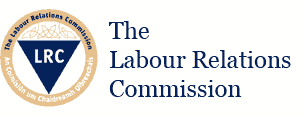History of the Labour Relations Commission
Evolution of the Industrial Relations Act, 1990 and the Establishment of the Labour Relations Commission:
Industrial Unrest in the 1970s
As was the case in many European countries, the 1970s saw disarray in Irish industrial relations with frequent unofficial disputes, inter-union disputes and strikes in essential services such as the Electricity Supply Board (ESB). Strike frequency during the period 1972-1976 was at its highest since the State was established. This was having a negative impact on our image abroad as a location for foreign investment.
Commission of Inquiry on Industrial Relations (CIR)
As a consequence of industrial unrest, the Minister for Labour in 1978 established the Commission of Inquiry on Industrial Relations (CIR). Its terms of reference were to examine industrial relations law and structures with a view to recommending improvements. The Commission of Inquiry reported in 1981 recommending changes in the institutional framework and in the law. This was the first mention of a body like the LRC which would have a conciliation function separate from the Labour Court. While the CIR report was not acted upon it set the scene for the debate which followed.
Department of Labour Discussion Documents and Legislative Proposals
This debate generated three discussion documents and a set of proposals, all produced by the Minister for Labour (1983, 1985, 1986 and 1988). An Industrial Relations Bill was published in December 1989 and was followed by extensive consultation with the employers? representatives and the Irish Congress of Trade Unions.
Enactment of New Legislation and Establishment of the Labour Relations Commission
The resulting Industrial Relations Act, 1990 became law in July, 1990. Under Section 24 of the Act, the Commission was established on 21 January 1991.
